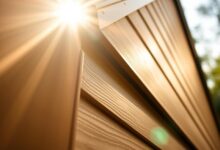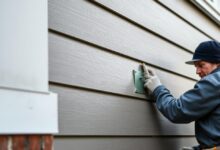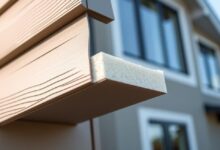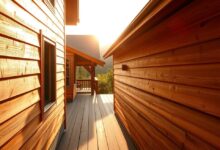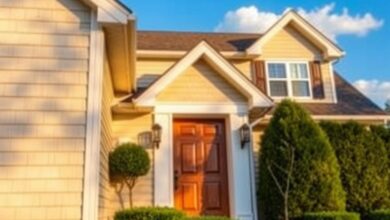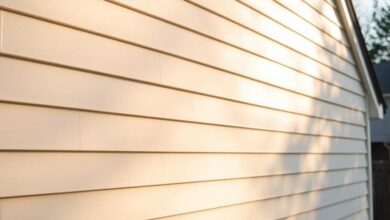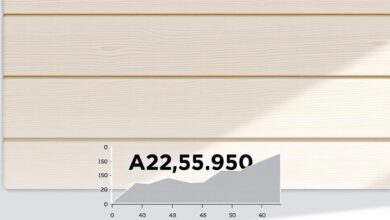Best Insulated Siding for Energy Savings
Homeowners are always searching for ways to cut down on energy use and make their homes more comfortable. Installing energy-efficient siding is a smart move. It not only makes your home look better but also helps keep it warm in winter and cool in summer.
Choosing the right siding can greatly lower your energy bills. It also makes your home more eco-friendly. Look for siding that insulates well, lasts long, and is easy to care for.
Key Takeaways
- Energy-efficient siding reduces energy consumption and lowers bills.
- Insulated siding improves home comfort by minimizing heat loss and gain.
- The right siding can enhance your home’s exterior and increase its value.
- Durable siding options reduce maintenance needs over time.
- Sustainable siding choices contribute to a more environmentally friendly home.
Understanding Insulated Siding and Its Energy Benefits
Insulated siding does more than save energy. It protects your home from the weather. This makes your home more comfortable and eases the load on your heating and cooling systems.
What Is Insulated Siding?
Insulated siding is a siding that has a strong outer layer and insulation inside. This mix boosts thermal performance. It cuts down on heat moving between inside and outside. Insulated siding benefits include lower energy use and bills.
How Insulated Siding Improves Energy Efficiency
Insulated siding keeps your home’s temperature steady. This means you need less heating and cooling. Homes with it use less energy to stay warm or cool.
The U.S. Department of Energy says insulation can cut energy bills by up to 30%.
R-Value and Its Importance in Different Climate Zones
The R-Value shows how well insulation stops heat flow. Different areas need different R-Values to stay warm. Knowing your R-Value helps pick the best insulated siding for your area.
Types of Insulated Siding Materials
The market offers a wide range of insulated siding materials. You can choose from vinyl, fiber cement, and metal options. Each material meets different needs, budgets, and styles.
Vinyl Insulated Siding
Vinyl insulated siding is known for its durability and low maintenance. It has insulation between vinyl siding and a backing. This setup reduces heat transfer, saving energy.
Vinyl insulated siding comes in many styles and colors. This lets homeowners pick their favorite look while keeping energy costs low.
Fiber Cement Insulated Options
Fiber cement insulated siding is great for energy efficiency and durability. It’s made of cement, sand, and cellulose fibers. This makes it robust and resistant.
When you add insulation, it gets even better at keeping heat in. It’s also resistant to pests and fire. This makes it a safe choice for homes.
Insulated Steel and Aluminum Siding
Insulated steel and aluminum siding offer a modern look. They’re coated to resist fading and chipping. These sidings are highly durable and can handle tough weather.
They also save a lot of energy when well-insulated. This makes them perfect for those who want style and efficiency.
Best Insulated Siding for Energy Savings
Insulated siding products are becoming more popular for saving energy. Homeowners want siding that looks good and saves energy too.
Top Vinyl Insulated Siding Products
Vinyl insulated siding is loved for being tough and easy to care for. Two top picks are:
CertainTeed CedarBoards Insulated Siding
CertainTeed CedarBoards Insulated Siding stands out for its durability and energy saving. It has a foam backing that keeps heat in and cold out, saving energy.
Prodigy by Alside Insulated Wall System
The Prodigy by Alside Insulated Wall System combines insulation and siding. It has a high R-value and can handle different weather, making it great for saving energy.
Premium Fiber Cement Insulated Options
Fiber cement siding is known for being strong and resistant to pests and fire. Some top choices are:
James Hardie with HardieWrap Weather Barrier
James Hardie siding with HardieWrap Weather Barrier offers a complete solution. It’s durable, has a weather barrier, and saves energy, protecting your home from the outside.
Nichiha Thermal Siding Solutions
Nichiha Thermal Siding Solutions are made to keep your home warm or cool. They reduce heat transfer, keeping your home comfortable and saving energy.
Best Metal Insulated Siding Choices
Metal siding is strong and now comes with insulation for energy savings. Some top picks are:
ATAS Insulated Metal Panels
ATAS Insulated Metal Panels look modern and save energy. Their foam core has a high R-value, cutting down on energy costs.
PAC-CLAD Insulated Metal Wall Panels
The PAC-CLAD Insulated Metal Wall Panels are stylish and energy-efficient. They have a foam core that reduces energy loss.
Factors to Consider When Choosing Insulated Siding
Choosing the right insulated siding is key to getting the most out of it. Homeowners need to think about what they need and what works best for them. This helps make a smart choice.
Climate Considerations for Different US Regions
The weather in your area is important when picking insulated siding. In places with very cold winters or hot summers, siding with a high R-value is best. Vinyl insulated siding is great for many climates because it’s tough and saves energy.
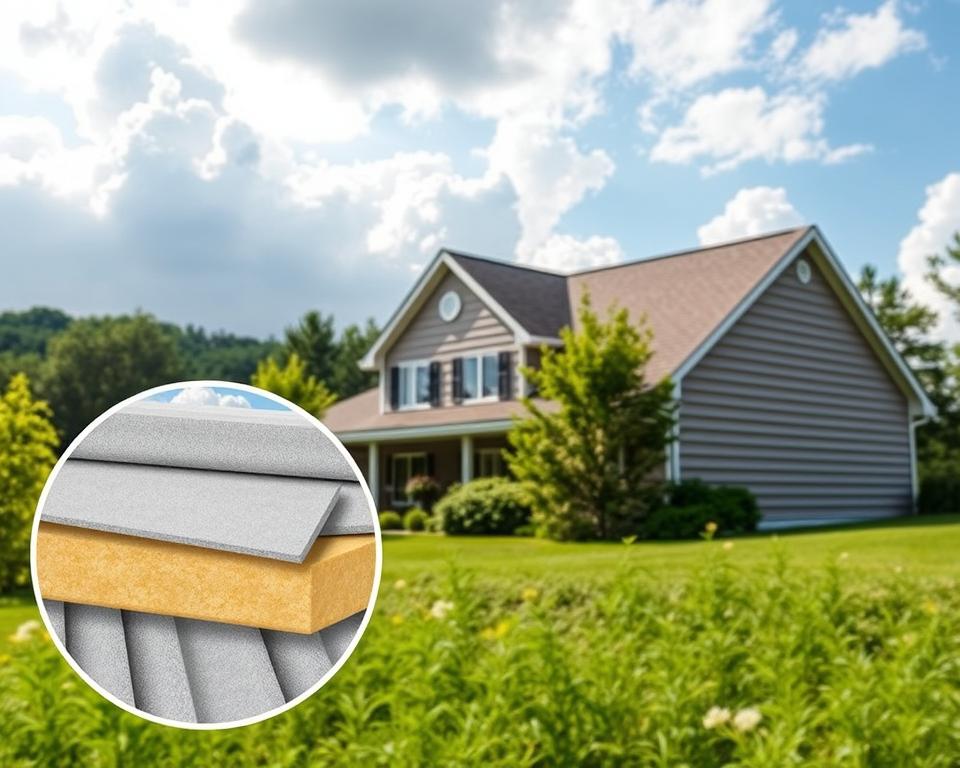
Durability and Maintenance Requirements
Different materials last longer and need more or less care. For example, fiber cement siding is strong against pests and fire but needs more upkeep than vinyl. Knowing how to care for your siding is key to keeping it looking good.
Aesthetic Options and Curb Appeal
Insulated siding comes in many styles, colors, and textures. This lets homeowners boost their home’s look while also saving energy. Whether you like the classic look of traditional wood or something more modern, there’s something for everyone.
Installation, Costs, and Financial Incentives
Thinking about insulated siding? It’s important to know about installation, costs, and financial help. Homeowners need to decide between hiring a pro or doing it themselves. They also need to think about the initial cost and long-term savings.
Professional vs. DIY Installation Considerations
Getting a pro to install insulated siding ensures it’s done right. This means better energy savings. But, it costs more upfront. DIY can save on labor but needs time and skill to avoid mistakes.
Key considerations for professional installation include:
- Ensuring the installer has experience with insulated siding
- Verifying that the installation meets local building codes
- Understanding the warranty and maintenance requirements
Average Costs of Different Insulated Siding Options
The price of insulated siding changes based on the material. Here’s a look at average costs per square foot:
| Siding Material | Cost per Square Foot | Installation Cost |
|---|---|---|
| Vinyl Insulated Siding | $1.50 – $3.00 | $3.00 – $5.00 |
| Fiber Cement Insulated Siding | $3.00 – $5.00 | $5.00 – $7.00 |
| Insulated Steel Siding | $2.50 – $4.00 | $4.00 – $6.00 |
Federal Tax Credits and State Rebates for Energy Efficiency
Installing energy-efficient siding can get you federal tax credits and state rebates. These can lower the initial cost. For example, the Nonbusiness Energy Property Tax Credit helps with certain home upgrades.
Return on Investment and Energy Savings Calculations
To figure out the ROI for insulated siding, look at energy savings and home value increase. A simple way to calculate ROI is to divide total savings by total cost. For example, if you save $500 a year and spend $10,000 on siding, your ROI is 5% a year.
Conclusion
Choosing the right insulated siding is key to saving energy and making your home more comfortable. There are many options like vinyl, fiber cement, and metal. Each has its own benefits and looks.
When picking siding, think about your climate, how long it lasts, how easy it is to keep clean, and how it looks. Knowing about installation costs and any financial help available is also important. This helps you choose the best siding for you.
Getting the best insulated siding can lower your energy bills and increase your home’s value. It also makes your home more comfortable. With the right siding, your home will be more energy-efficient and better protected from the weather.
